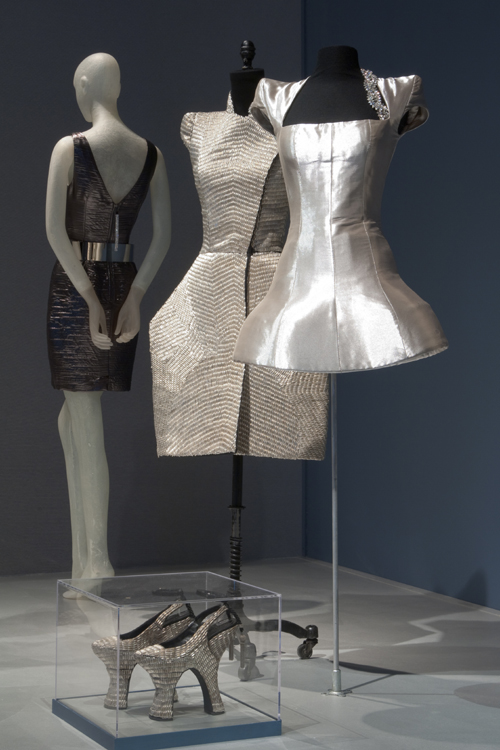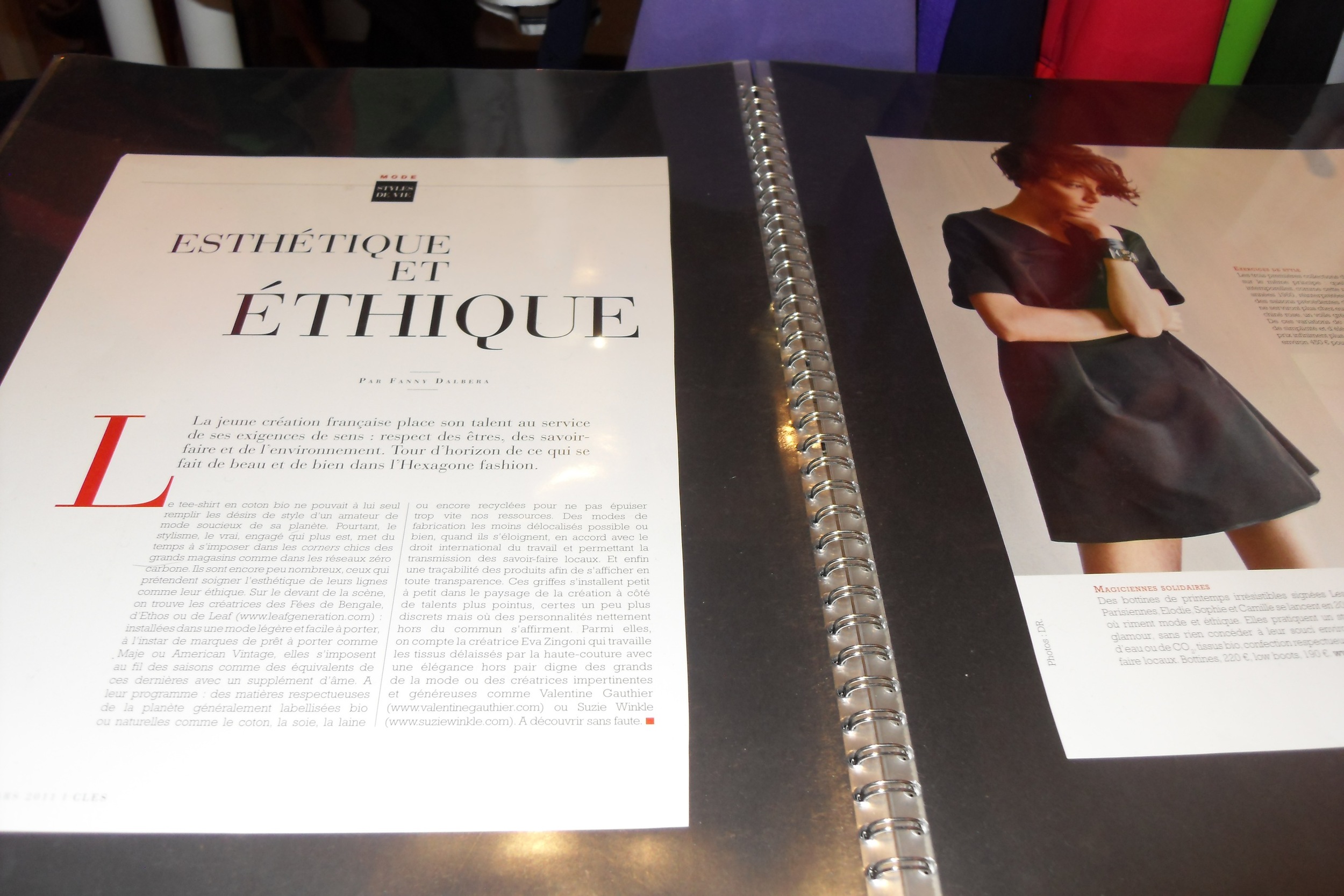A Conversation with Valerie Steele about Fashion and Art
/by Ingrid Mida
Valerie Steele by Aaron Cobbett
Dr. Valerie Steele is the Director of the Museum at the Fashion Institute of Technology in New York as well as the Editor-in-Chief of Fashion Theory. She spoke with Ingrid Mida on the topic of fashion and art on August 23, 2011. This is the transcript of their telephone conversation.
Ingrid: In July, I interviewed Matthew Teitelbaum who is the director and CEO of the Art Gallery of Ontario and in my conversation with him, he suggested that for a fashion designer to be considered an artist, he thought it was important for them to have the specific intention to engage in the artistic community before they could be considered as art. And I wondered what your reaction might be to that?
Valerie: I think that is a valid objection, because art is not just the object itself, be it the painting or the dress, it is also the belief in the value that it is art which is created by quite a number of different people collectively, including the creators themselves. Whenever I’ve questioned whether or not fashion is art, some people have gotten annoyed and said “how can you of all people question whether fashion is art?” But I have to question it, because designers as varied as Karl Lagerfeld, Rei Kawakubo, and Miuccia Prada have all denied that what they do is art. Part of the issue is who controls the definition of art? And does the creator’s intention trump all other interpretations of the work.
Let me step back for a minute. Certain kinds of art, like classical music and old master paintings, achieve 100% buy-in; everyone agrees that this is art. Other kinds of creative endeavors -- like cinema, photography, and jazz -- were formerly not regarded as art, but increasingly over the past 30 or so years have been accepted as art, so that you have a photography department at the Museum of Modern Art, jazz is regarded as a great American art form, etcetera. I would say that fashion is one of those categories which is in the process of being reevaluated as art, but that process is still very much contested. The person who is most useful to me in thinking about this was Bourdieu, who has written about the construction of art, and about how you have to have a group of people (dealers, curators, museum directors and collectors) who agree that something is art, and you also have to have some kind of consensus that the creator is an artist.
For example, some designers such as Hussein Chalayan have suggested that they may be artists, because “we studied at Central Saint Martins, where fashion is regarded as one of the arts, maybe a kind of body art. It’s true that we had to look at the business angle because we had to sell it, but we also received training as artists.” Most fashion designers , however, do not receive that type of training; they are trained to be fashion designers. Most of them regard themselves as fashion designers, not as artists.
Ingrid: That is an interesting perspective but there is so much overlap between the two especially if you consider the way that the Met presented McQueen’s work as an artist and the thematic premise of the show was that McQueen was a Romantic individualist, a “hero-artist who staunchly followed the dictates of his inspiration.”. The intent seems to be to present his work as an artist and that fashion was his medium.
Valerie: Yes you could argue that, and because the Met is an art museum, that is an implicit message behind all of their exhibitions of fashion. You cannot look at the McQueen show in isolation. The Met had the Chanel show with Lagerfeld and many other designer exhibitions. Do you say that everything at the Costume Institute is art because it is at the Metropolitan Museum of Art? The McQueen show was brilliant, in part because McQueen was the greatest fashion designer of our era. In addition, Andrew curated the exhibition brilliantly and was working with McQueen’s collaborators to create the ambiance that existed within his fashion shows, which many regarded as a type of performance art or theatrical art.
There is no consensus yet that fashion is art. However, by showing fashion in museums, it has encouraged the idea that fashion is art. It is true that if you look at a McQueen or a Balenciaga in the context of an art museum, it has the aura of a work of art, but it doesn’t mean it was created to be art.
Ingrid: That leads me to the next question referencing the Jean Paul Gaultier show. When I interviewed Nathalie Bondil, Director of the Montreal Museum of Fine Art, she said she didn’t really care that Jean Paul Gaultier had expressed the opinion that fashion is not art. She was more interested in the underlying premise of his work that beauty has no singular shape, age, gender or sexual orientation and that this was the important message to convey.
Valerie: That is an important message to convey, but not one that has to do anything with art. Art is not defined by the pursuit of beauty and has not been so for at least 100 years.
Ingrid: Most artists have a premise that underpins their work so if there is a socio-political message by which to reference their work, I think that is relevant. The JPG show used the animated mannequins and other means to convey an art installation like presentation. Since you are a curator yourself, do you think that a curator can make fashion into art by the way it is installed or by incorporating lights, sound, video?
Valerie: Not singlehandedly, no. A curator is one of the participants in the art world who can help promote the idea that fashion can be interpreted as art, but it is not really up to one individual curator any more than it is up to one individual designer to make a flat out decision as to whether fashion is or is not art. That has to be a collective decision. So no matter how much we admire a particular designer or regard the work as being as visually and intellectually gripping as a painting or a sculpture, it is not something that we can individually decide -- that it is art or is not art.
Regarding the animated mannequins in the Jean Paul Gaultier exhibition, I think that the faces, while fascinating, conveyed Gaultier’s belief that fashion is part of life, not that fashion is an art form. There is a real split between designers, like Paul Poiret and Elsa Schiaparelli, who thought that fashion is art, and those like Chanel and Gaultier, who say that it is part of life. You also have certain artists who have tried to transform the material of life into art. And you have certain critics who believe that fashion is art’s evil “Other.”
Ingrid Mida is a Toronto-based artist. writer and researcher who recently gave the keynote address at the Costume Society of America mid-west conference.














